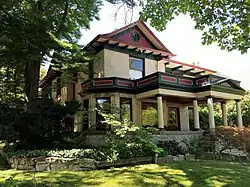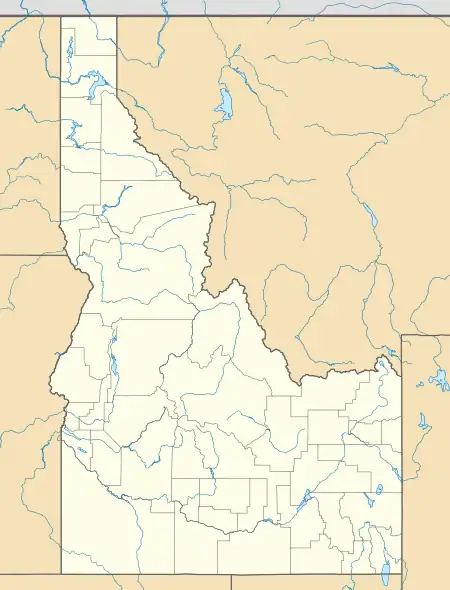Henry Coffin House | |
 The Henry Coffin House in 2018 | |
  | |
| Location | 1403 Franklin St., Boise, Idaho |
|---|---|
| Coordinates | 43°37′26″N 116°12′20″W / 43.62389°N 116.20556°W |
| Area | less than one acre |
| Built | 1905 |
| Architect | John E. Tourtellotte & Company |
| Architectural style | Colonial Revival |
| Part of | Fort Street Historic District (ID82000199) |
| MPS | Tourtellotte and Hummel Architecture TR |
| NRHP reference No. | 82000188[1] |
| Added to NRHP | November 17, 1982 |
The Henry Coffin House was designed by Tourtellotte & Co. and constructed in Boise, Idaho, USA, in 1905. The house is an early example of Colonial Revival architectural design by Tourtellotte, who lived across the street. It was included as a contributing property in the Fort Street Historic District on November 12, 1982. It was individually listed on the National Register of Historic Places on November 17, 1982.[2]
A native of Annapolis, Indiana, Henry N. Coffin became a clerk at the First National Bank in Leavenworth, Kansas, then a clerk at the First National Bank in Lawrence, Kansas. He served as assistant treasurer of the State of Kansas prior to moving to Boise in 1890. In Boise he became the cashier of the First National Bank, and he helped to organize the Boise Bank of Commerce, holding the position of cashier.[3] Coffin was elected as State Treasurer of Idaho, 1903–1904, then reelected, 1905–1906.[4]
References
- ↑ "National Register Information System". National Register of Historic Places. National Park Service. November 2, 2013.
- ↑ "National Register of Historic Places Inventory/Nomination: Henry Coffin House". National Park Service. Retrieved September 23, 2018. With accompanying pictures
- ↑ "Distinguished Successful Americans". Successful Americans, Chicago. 1912. p. 263. Retrieved September 12, 2018.
- ↑ Robert O. Jones (1922). "Sixteenth Biennial Report of the Secretary of State of the State of Idaho". Retrieved September 12, 2018.
External links
![]() Media related to Henry Coffin House (Boise, Idaho) at Wikimedia Commons
Media related to Henry Coffin House (Boise, Idaho) at Wikimedia Commons